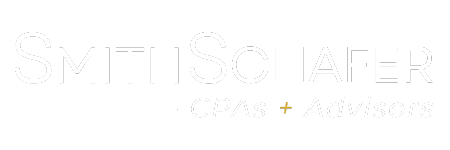Ways Manufacturing businesses can prioritize and improve cash flow
During these uncertain times, manufacturing companies face many challenges. Making cash flow a priority is something every manufacturing company owner needs to keep in the forefront of their mind. With the potential loss of work, change in timing for projects, increased costs for raw materials, and fewer project opportunities, many companies have begun to experience tighter cash flow. Below are strategies to help prioritize and improve cash flow in your manufacturing business.
1. Accelerate Receipts
- Bill early and often, as the contract terms allow. The sooner you can get invoices out, the sooner you are likely to receive payment. Consider including upfront customer deposits or milestone payments for customers who have long-term projects. This will help to bring in cash flow ahead of time or over the life of the project. These customer deposits can cover the upfront costs related to the long-term order, which previously may not have been received until project completion.
- Additionally, ask for payment when invoices become due. Do not allow unpaid invoices to accumulate and grow old. Also, consider adopting new policies and letting your customers know about it. Examples include having all invoices due on receipt or charging a penalty, interest for unpaid invoices within 30 days, or stopping work for a customer if payment is not received within 60-90 days for previous projects.
2. Defer Payments
- Consider checking with vendors if they would allow you to defer your payments until a later date. Review your upcoming expenses and determine whether these items are required considering the current pandemic environment. Additionally, review your insurance policies, phone plans, health care plans, and any other plans to find savings, especially if you have not done so recently.
3. Renegotiate Terms with Banks & Vendors
- Banks
- Renegotiate terms of your line of credit agreements or other long-term debt agreements. Interest rates have dropped significantly in 2020. If you have a minimum interest rate on any variable debt agreements, now may be a good time to review and renew.
- Go into the renegotiations with a plan. Do not be afraid to ask for a fee reduction and let the bank know that you monitor the fees and continue to do so. Consider extending the length of your renewals. Many bankers prefer to freeze pricing for 3-5 years as it is less likely for the client to switch banks. Many companies make the mistake of negotiating pricing every year, which leads to lower prices, but could risk damaging the banking relationship.
- Vendors
- Renegotiate terms with your vendors, but do not just focus on price. Negotiating for a discount related to early payments, requesting extended payment terms, or paying with a credit card can help improve cash flow while maintaining a positive relationship with key vendors.
4. Improve Inventory Management
- Thoughtful inventory management is an easy way to improve cash flow. Liquidating excess or slow-moving inventory by finding a single large bulk purchaser or asking the distributor you originally purchased to buy it all back. Although you will likely be charged a fee to do so, this removes the inventory and can improve cash flow.
- Manufacturing companies should also re-evaluate how much inventory needs to be kept in stock. Reducing the overall value in inventory may result in a simple improvement in cash flow. Additionally, manufacturing companies should consider establishing new purchasing procedures with an approval process to avoid over inventory purchasing. Do not make large purchases to get volume discounts if the purchased materials will not be used quickly.
5. Sell Assets
- Review your listing of fixed assets to determine if any non-productive assets can be sold. These could be old items that have not been used for a while, or items no longer being used due to the pandemic’s reduced workload.
6. Take Advantage of Tax Opportunities
- The Research and Development (R&D) Tax Credit is one of the best opportunities for businesses to reduce their tax liabilities, improve cash flow, and increase earnings-per-share. The R&D credit is designed to reimburse manufacturers who develop new products or inventions and offer a significant percentage back to qualified research activities and expenses. There is no limitation on the amount of expenses and credit that can be claimed each year. Smith Schafer can examine your company’s activities and determine which areas are eligible for the R&D tax credit.
- Qualified Improvement Property (QIP) is now a 15-year, bonus depreciation eligible property, after the CARES Act provided a technical correction from Tax Reform in December 2017. QIP is a tax classification of assets generally including interior, non-structural improvements to nonresidential buildings placed in service after the buildings were initially put into use.
- Net Operating Losses Carrybacks
- The CARES Act introduced five-year net operating loss carryback opportunities for losses arising in taxable years after 2017 and before 2021. Suppose the taxpayer has a chance to carry back a 2018, 2019, or 2020 loss. In this case, it may be beneficial to maximize the loss to the extent that there are income and associated taxes to recover during the five-year carryback. A downturn in the economy offers many unique opportunities to enhance such losses.
- Cost Segregation Study
- These studies are among the most valuable tax-saving strategies available for manufacturing companies. A cost segregation study’s primary goal is to identify all construction-related costs for a manufacturing facility that can be depreciated over a shorter tax life than the building, which is up to 39 years for nonresidential real property.
Questions about applying these cash flow tips in your business?
How can we help your manufacturing business plan for the future? We work with approximately 100 Minnesota manufacturing companies helping them grow with accounting, tax, and consulting solutions. Contact us today to schedule a consultation with one of our industry experts.



